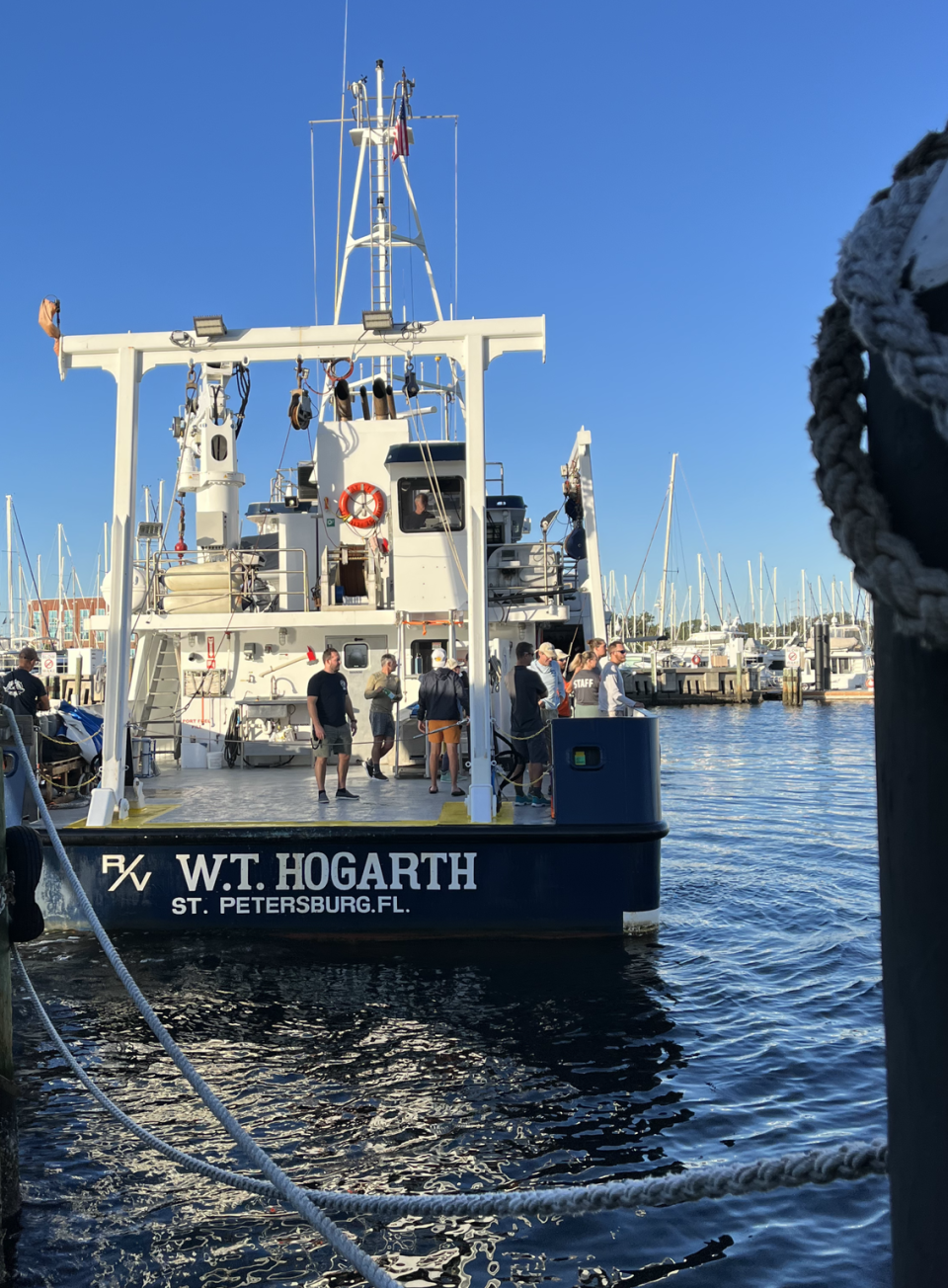Ian’s aftermath: Spreading red tide and hard-hit reefs found by weeklong investigation at sea
It hasn’t been a good week in Southwest Florida water news: One group of researchers on an offshore reconnaissance cruise found water stained with the characteristic tint of red tide, while another confirmed high levels of the microbe that causes the toxic blooms.
The same cruise found once-vibrant reefs that have become “disaster sites.”
Scientists from several agencies and nonprofits, including the Florida Institute of Oceanography, The Water School at Florida Gulf Coast University and the Sanibel-Captiva Conservation Foundation, spent last week aboard the Hogarth, a research vessel shared among institutions, sampling 50 sites off the Southwest Florida Gulf coast.
Previously: Video: 'Contamination in the water': Hurricane Ian's devastation in Florida

In the past, red tides and blue-green algae blooms have followed hurricanes because huge slugs of polluted water tend to fertilize blooms that feed off the influx of nutrients, so the idea was to check what may be developing.
The Florida Fish & Wildlife Conservation Commission confirmed discolored areas they discovered were red tide. Samples showed high levels of the bloom-causing Karenia brevis organism inshore and offshore southwest of Sanibel, and offshore from Punta Gorda and Boca Grande. Also, Captiva and North Captiva had medium counts and Cayo Costa’s was low, a trend that continued north to Manasota Beach and south to 32 miles offshore of Wiggins Pass in Collier County.
But the affected areas appear to be expanding: “The bloom is more widespread than FWC samples indicated (Thursday) and continues to extend south,” SCCF Marine Lab Director Eric Milbrandt, Ph.D., who was aboard the six-day cruise, said in a release. “We were able to characterize nearshore ocean conditions before the bloom but after Hurricane Ian, which will help us better understand red tide blooms.”
Also aboard the cruise was Sanibel & Captiva Islands Chamber of Commerce board chair Calli Johnson, whose family founded Bailey’s General Store on Sanibel more than a century ago. In addition to serving as FGCU’s dive safety officer, Johnson documented underwater habitat.
What she saw was discouraging. “It was devastating both above and underwater. Artificial reefs that are 30 miles offshore are substantially affected by the hurricane,” said Johnson. “The one-time vibrant reefs are now underwater disaster sites themselves.”
Water woes: Saltwater pushed up, freshwater flooded down Caloosahatchee during Hurricane Ian landfall
Health officials warn against swimming at local beaches, in pools after Hurricane Ian
All is not lost, she says – “There are inspiring signs of life, for example, many of our favorite recreational fish are abundant” – but the big picture is worrisome.
“The greater systems that support those fish were heavily affected,” she said. “Time will tell how this affects our greater economy, because changes in the fishing industry and tourism will come from changes in our underwater world.”
Scientists have begun analyzing samples at FGCU’s Water School. It will be a few weeks before the SCCF’s Marine Lab, still without power, can analyze samples to determine the extent of low oxygen areas, which can lead to further degradation of sea life, Milbrandt said.
Meanwhile, on Friday, the U.S. Army Corps of Engineers, which controls Lake Okeechobee and the Caloosahatchee, announced it will send Lake Okeechobee water down the Caloosahatchee starting Saturday.
The amount of water – 1,200 cubic feet per second – will be within what’s called the “optimal flow envelope” for the river, which needs freshwater to keep the salt balance in its estuary at healthy levels for the animals and plants that live there. Too little or too much freshwater can wreak havoc, but this amount shouldn’t cause salinity problems, said Calusa Waterkeeper John Cassani.
What may be trouble is the contaminants it carries, he says. “The water has relatively high levels of nutrients that could increase the probability of a nearshore red tide bloom or the increased duration of a bloom nearshore or in the back bays.”
But at least not right away, said Lt. Col. Todd Polk, Jacksonville District deputy commander for South Florida. At the moment, the water is so stirred up and cloudy that not enough light can get through for a bloom to flourish, though that doesn’t mean it won’t later, he said. “Right now, that algae needs light … it’s not getting that (but) as things slow down and it gets more light, you may very well see more algae growth later on this season ... typically April, May and even into June. So yes, it is a concern.”
This article originally appeared on Fort Myers News-Press: Red tide, devastated reefs follow in the wake of Hurricane Ian

